10. Mary Poppins (Robert Stevenson, 1964) – Mary Poppins in the clouds above London
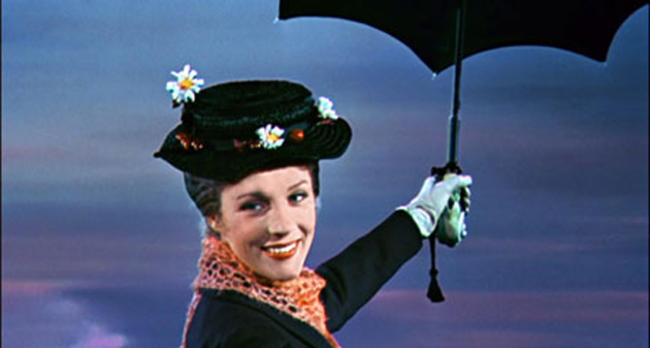
Julie Andrews’ portrayal of the classic character from P.L. Travers’ novel is not only one of the all-time classic performances, but also the heart of one of the best works that has come out from the company founded by Walt and Roy O. Disney.
The subversion of the witch archetype is presented in the opening shots of the film, where we see Poppins’ figure in the rose–colored clouds above Jim Fetherolf and Peter Ellenshaw’s recreation of 1910 London. The matte paintings give the film a magical but tangible quality that somehow looks even more striking today than back in 1964.
9. In the Mood for Love (Wong Kar–Wai, 2000) – Little glance in the corridor
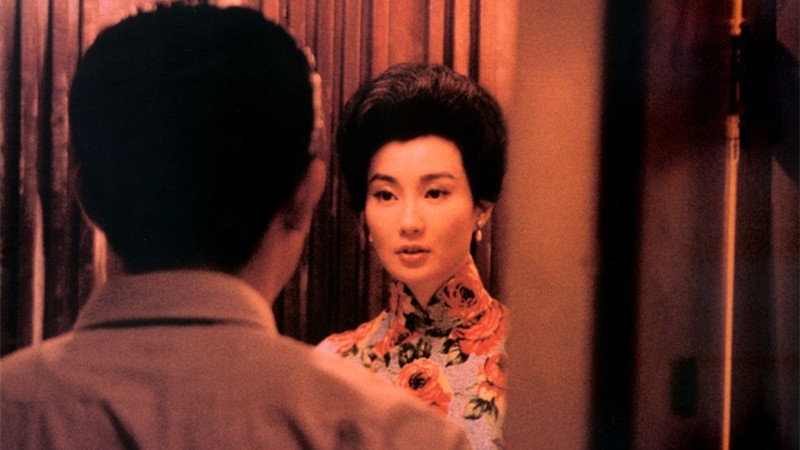
Wong Kar–wai’s “In the Mood for Love” is a film built around an indiscretion. The viewer feels the weight that societal pressure in 1962’s Hong Kong has in it character’s interactions. Its protagonists seem not only to avoid engaging beyond purely formal conversation, but also refuse to look at each other more than what’s considered polite.
That’s why every little interaction in the film feels so meaningful. The little glance in the corridor that they both share hits almost like a giant advance in their relationship. All heightened by Christopher Doyle’s interiors, which are elegant and bursting with color without being artificial or tacky.
8. The Seventh Seal (Ingmar Bergman, 1957) – The Knight and the Death play chess by the Sea
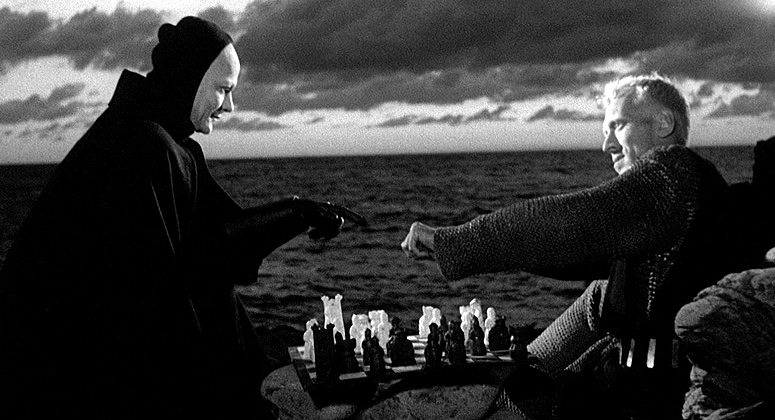
Antonius Block (Max von Sydow) facing Death (Bengt Ekerot) through a game of chess is an image that has been ingrained in the collective imaginary, thanks to its imposing and universal symbolic nature.
The shot visually articulates everything around the theme of mortality and life after death: the dark cloak against the knight’s shiny armor, the black pieces against the white ones in the game, and the dramatic way both characters find themselves trapped between the white clouds, hiding the Sun and the sudden blackness of the sea in the background.
7. Blade Runner (Ridley Scott, 1982) – Rachel exhales smoke in the test scene
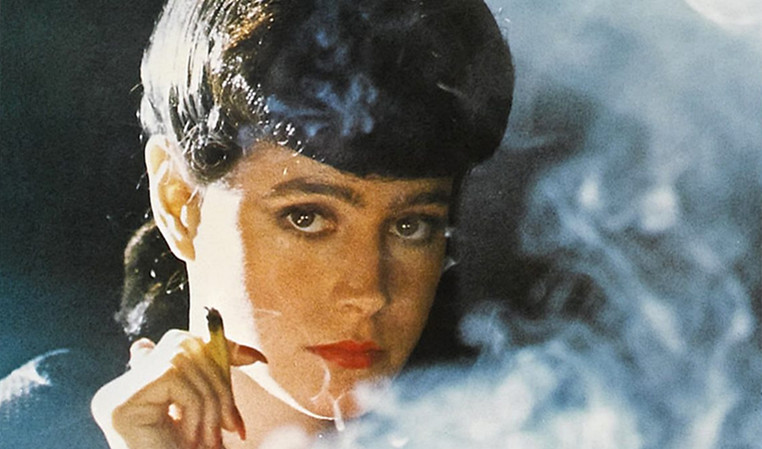
Ridley Scott’s 1982 classic is still one of the most beautifully shot films of all time, but from all of its classic scenes, Rachel’s (Sean Young) test in the first half of the film is still one of the most memorable sequences from the director’s filmography.
Jordan Cronenweth’s use of high contrast lightning that goes from blow-out white to total darkness with a soft gradient along Young’s facial features perfectly recreates the look of the classic black-and-white noir films. This, along with the light that cuts horizontally the background, the texture provided by the smoke, and the aerial dispersion of the setting, elevates the whole scene from a shot–reverse-shot dialogue to one of the most visually arresting moments in the whole sci–fi genre.
6. The Night of the Hunter (Charles Laughton, 1955) – The kids see the Hunter from the hayloft
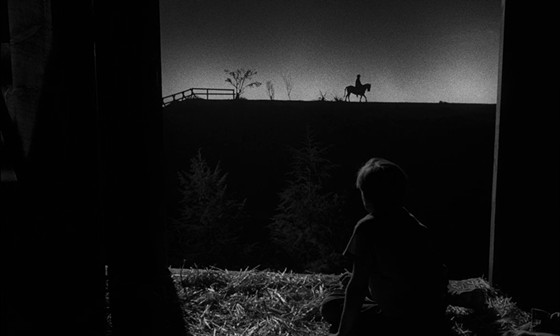
Stanley Cortez’s legendary work for Charles Laughton’s “The Night of the Hunter” was mostly created through forced–perspective tricks on a soundstage. Cortez wanted the blacks to be deep and rich, so Tri–X film stock was used in order to get more contrast out of the image.
The aesthetic of the film was not just visually captivating, but it also reinforces the two-dimensional, almost unreal world, as it is perceived by the children pursued by Robert Mitchum’s character. As they watch from the hayloft, the silhouette of the Hunter appears in the distance, as if they were just dreaming about a play made of light and shadow figures.
5. Metropolis (Fritz Lang, 1927) – Cityscape with Fredersen’s headquarters
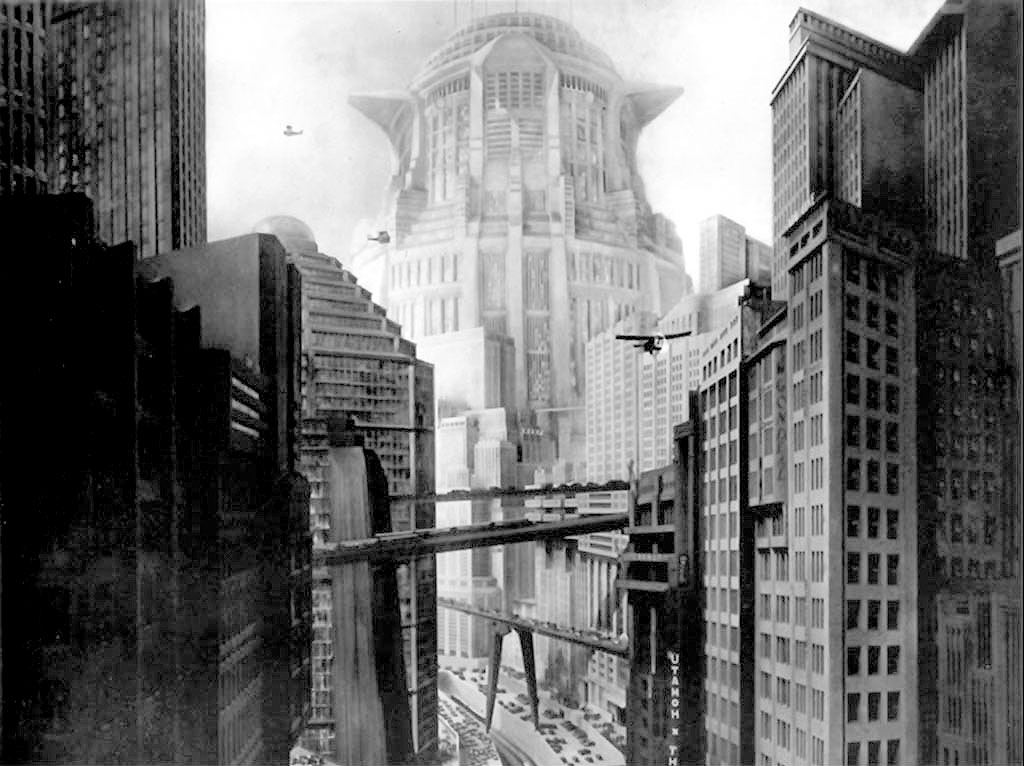
The 1927 Fritz Lang’s milestone is not only a groundbreaking achievement in the practical and in–camera visual effects field, but one of the best films that came out the silent era.
The vision of the New Tower of Babel, the building that dominates Metropolis, is the culmination of the sequence that presents the city that gives the film its name. The shot is a seamless combination of flat and three dimensional models and matte drawings and paintings, as the Tower itself dominates all of them with its otherworldly aura and visually striking design.
4. Floating Weeds (Yasujiro Ozu, 1959) – Discussion in the rain
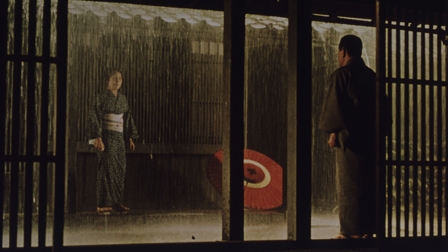
Yasujiro Ozu’s cinema is a testament of how self–imposed limitations can (and usually do) work in favor of creating lasting emotionally resonant works of art. The visual idiosyncrasies of the director – the 50mm lens that mirrors the human eye, the lower height of his camera, the geometry and frames within frames of his images, his use of pillow shots – show nothing but his respect and reverence when he was portraying the relationships between his characters in contemporary Japan.
This shot in “Floating Weeds” is just one of many that could perfectly make the cut. The film contains some of Ozu’s (along cinematographer Kazuo Miyagawa) most amazing visual work, especially with his incredible rendering of color. However, the haunting power within the image of the rain falling, punctuated by the red umbrella in the ground, is impossible to deny.
3. Persona (Ingmar Bergman, 1966) – Looking in the mirror

When we talk about the best shots in film, it is common to be attracted to perfectly rendered landscapes and impressive visual effects, but few things involve more mystery and deserve more attention than the ability to capture the actors on the other side of the lens.
The delicacy with which Sven Nykvist lights Liv Ullmann and Bibi Andersson while they’re looking in the mirror in “Persona” is nothing short of astonishing. Nykvist hated to use harsh lights on his actors and achieved one of the most transcendent renderings of human physique and emotion.
2. Manhattan (Woody Allen, 1979) – Under the 59th Street Bridge

Gordon Willis’ mastery of light and shadows makes “Manhattan” the most visually stunning film in Woody Allen’s extensive oeuvre. The silhouette of Isaac (Woody Allen) and Mary (Diane Keaton) waiting for the dawn in a bench under the Queensboro Bridge is a defining moment in the history of film.
Willis almost drowns the foreground in black, but lets the texture of the bridge and its lights stay, as if the characters were contemplating a postal in what is probably one of the most beautiful captures of the city of New York.
1. 2001: A Space Odyssey (Stanley Kubrick, 1968) – The Star Child and the Earth
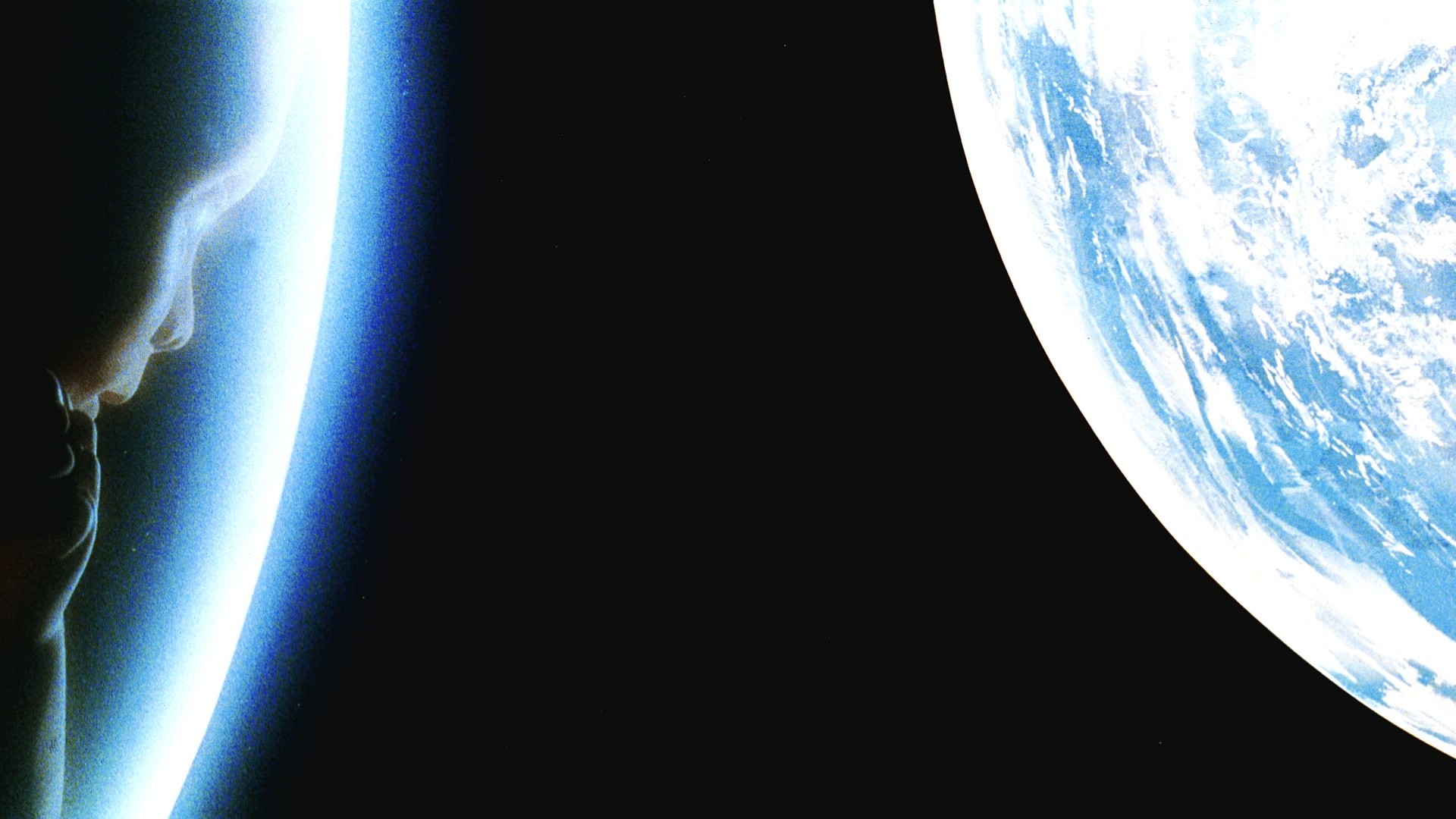
“2001: A Space Odyssey” has so many classic shots that choosing only one frame from Kubrick’s 1968’s classic will always be seen as underwhelming. However, there’s no doubt that the image of the Star Child floating beside Earth is one that has been deeply ingrained in popular culture since the film’s premiere in 1968.
One of Kubrick’s most defining visual traits was his use of one–point perspective and symmetry, but here he seems to look for affinity through size, shape, and color. Until now, the film has made a point of placing humans inside circles, contrasting with the right angles of the Monolith. The image of Dave leaning toward the Earth looks as though a mirror had been placed in front of him, one that reflects back Humanity’s history, for which he represents the next step.